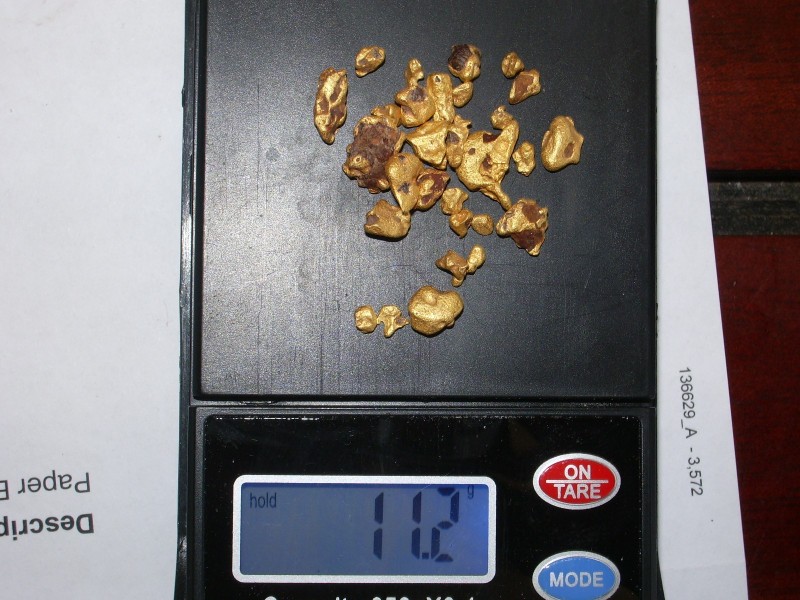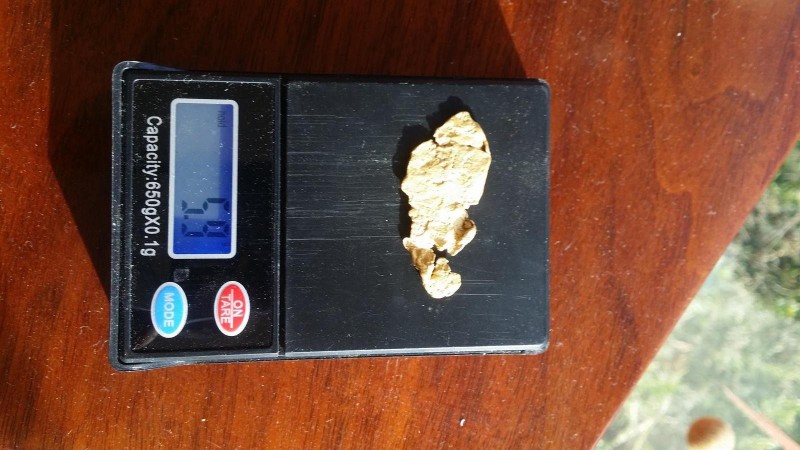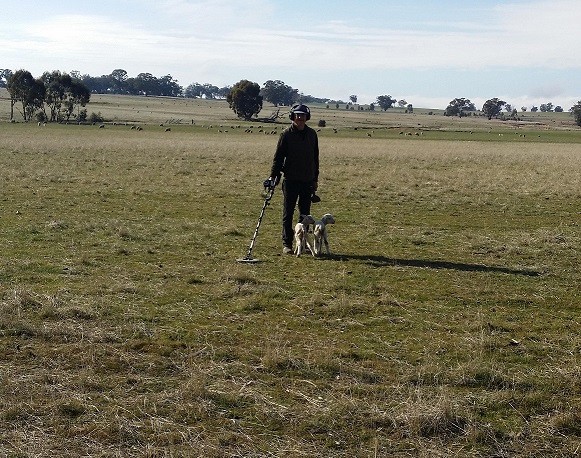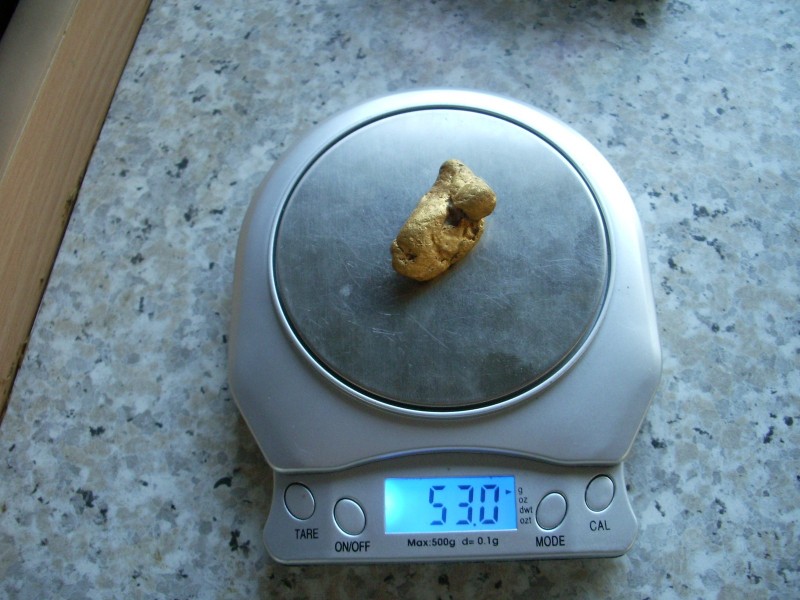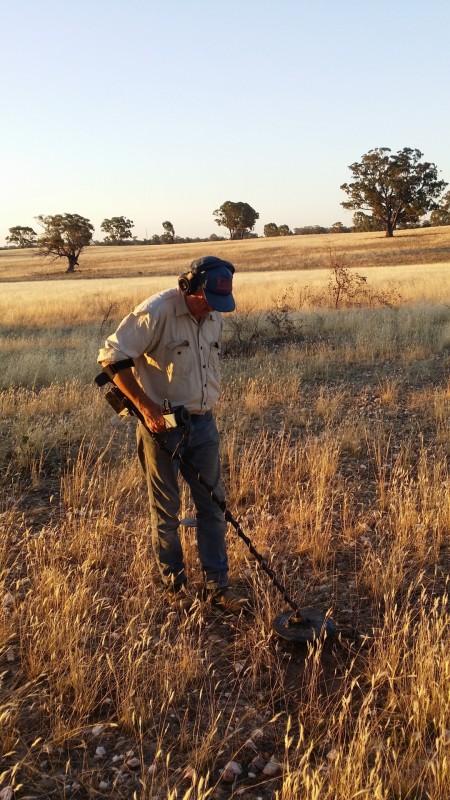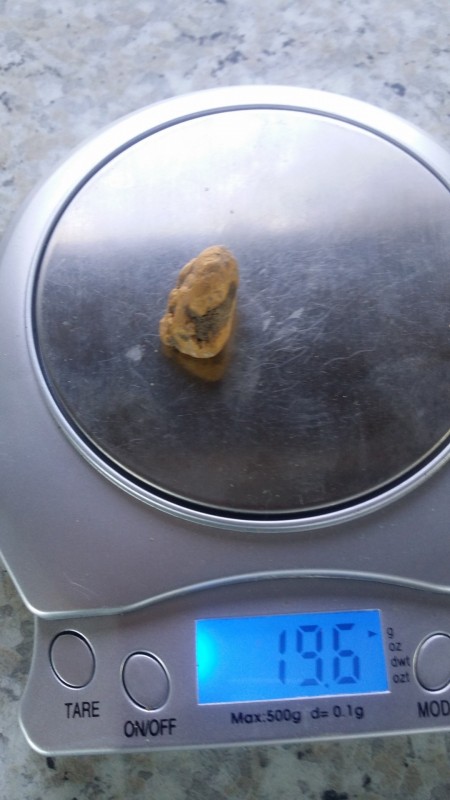-
Posts
576 -
Joined
-
Last visited
-
Days Won
14
Content Type
Forums
Detector Prospector Home
Detector Database
Downloads
Everything posted by jrbeatty
-
Thanks for that Hobo. Visiting or living?
-
That's correct goldenoldie. The QED picked up more with the 14" Elite, but the percentage difference wouldn't have made anyone particularly rich. Remember we were detecting deep tiny bits there, and that is something the QED is extremely good at. The same applies to the hammered areas of the "Triangle" at large, where more tiny bits are found by fossickers (on a daily basis) with all manner of detectors specialising in tiny gold. From that point of view the "Triangle" is potentially inexhaustible. The GPZ's, SDC's etc are, as you correctly word it, "cleaning up" The QED is there too, but remember the number on the field is tiny compared to other brands. Nonetheless, posted finds are starting to appear. Why aren't I cleaning up there as well? Because I prefer digging larger pieces. (that's the reason I use a 14" coil and not something smaller) and the bigger pieces in the "Triangle" are very rapidly becoming extinct. I prefer prospecting to fossicking, finding new areas, the call of the unknown with the potential of finding the big one. For this exploratory work, I find the QED to be ideal.
-
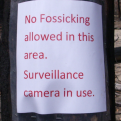
Nugget Detecting Training November 3 At Rye Patch
jrbeatty replied to Steve Herschbach's topic in Detector Prospector Forum
The first one breaks the ice, after that the rest follow. Must be one of those psyc - psi - mental things Guess I was lucky, walked straight onto an oz piece within minutes of switching on my first detector - back in 1987. I still have it. Hooked me for life. Can't beat an experienced tutor though. -
Thanks Fred, Del, Steve. He detected some good gold here in the 80's and was later a Minelab SD prototype tester. If I'm ever in Quartzite, AZ I'll look him up.
-
Just wondered if anybody here in the US knows of author and prospector Pieters whereabouts? Some old friends and I had a lot of fun prospecting Western Australia with them back in the mid nineties, while he and Debbie were living at Gwalia WA. As far as I know he left years ago. Steve: Apologies if this is off topic or in the wrong place, please feel free to move it somewhere more appropriate. Thanks! Juvenile fun in the "outback" Left to Right: Me, the late Jim Stewart, Debbie, Reg Wilson, Pieter Heydelaar, John Hider Smith. Pieter with a fuel tank off a Soyuz spacecraft. He had a good meteorite collection as well. A much younger me (with camera) and Australian detecting legend and prospecting buddy Jim Stewart:
-
Well said Hobo. That's been my experience as well, without exception.
-
Mitchel: Spent a lot of time detecting around Bendigo. Some of my best finds came from the Victorian "Golden Triangle" It's a bit hammered these days but, like all popular areas, will continue to reward the lateral thinkers.
-
Sorry Northeast, didn't mean to confuse! Geology is a passion of mine and has led me to my best finds. The best man to contact, though, is Reg Wilson. He conducts detecting courses which includes basic geology. He's a member here (I believe) so you could try sending him a personal message. I don't want to appear to be advertising anything here so I'd best leave it at that.
-
Mitchel: The geology there is not dissimilar to much of the central Victorian goldfields and I was frankly astounded it had received little early attention (limited to very rare test holes from the 1860's) and none at all from the detecting fraternity. Being located between (but distant from) far better known goldfields probably resulted in this neglect - anyway, to answer your question, the geology is straightforward, with complications The base rock (in common with most of the central Victorian gold provinces) is north/south oriented, vertically tilted Ordovician metasediment which was intruded by quartz veins (reefs) during an orogenic event in the upper Devonian. These are host to the gold. The complication arises because much of the area in question was covered by glaciation during the Carboniferous/Permian epoch, which introduced rocks from hundreds of kilometres south (tillite) some possibly from Antarctica (which at the time was connected to Australia as part of the Gondwana supercontinent) Some of this tillite may well have been gold bearing as well, hence the prospecting conundrum. All of this material (including the auriferous quartz reefs in the metasediment) was deeply eroded during the early Tertiary and distributed unevenly in watercourses and streambeds. Since that time, Quaternary erosion has left these deposits stranded above current drainage channels. It was my noticing some faint traces of these that led to the initial discovery on this small hill: The prominent boulder is a small Permian glacial erratic.
-
Thanks Steve. It's a shame about the gutter politics .The level of abuse was totally unexpected by me, knowing nothing of the long QED gestation period involved. Publishing my results has resulted in accusations of fraud and duplicity, even being banned from one prospecting forum without warning or notice. Look, I'm pretty thick skinned and have been through far worse but I can understand why other users would be reluctant to publish results - Anyway, enough of that. My observations so far: I was sceptical of Howards little box at first and frequently checked the ground afterwards with my 5000. All that changed when we were detecting an 1860's lead on private ground near Maldon, not far from where the 6 gram shiny flat piece was found. This lead only contained small deep gold (biggest we found was about 2 grams) This was contained in a (noisy but very even) ferruginised sand on a decomposed granite bottom: This time I marked out an area and gridded it with the 5000 and 14" Elite, then followed up with the QED (mode 1 gain 5, a very sensitive setting) This resulted in more gold, mostly deeper and some tiny shallow pieces. The signals were mainly sharp but some were threshold changes only. After that I left the 5000 in the campervan. Here's some of the bigger pieces from that lead, we gave the smallest bits to the farmer as his cut : Reg uses the 11" Elite exclusively and can hear miniscule targets I can't. I don't mind, since I hate chasing bits I can neither see nor weigh. Edit: located an image of the total tally from the "flysh-t lead" as we named it:
-
Thanks Mitchel. Pretty light country overall, but grows good wool. The property owner who was on 20% (that's the deal we always work on) commented somewhat facetiously that it was the best return he ever had from that particular paddock . Not at all, Matt. There have been many gold droughts in the past when I would have willingly mortgaged my right arm for just 5 grams Who knows what's coming next? Go get 'em! The bright flat 6 grammer was found by us in June this year on another property near Maldon, Victoria, but this time the lead had been worked in the 1860's. It is paper thin and sold for well over gold price. The reef above the lead had been fabulously rich, and all the gold was in sheet form. Apparently, following blasting, it was routinely scraped off the hanging wall of the reef with spades, rolled up and sold to the local bank. The other bits appear in an earlier photo: In contrast to the February picture, central Victoria in June/July has frosty mornings usually followed by pleasant sunny days. This is typical of the properties we work, with Reg (the good shepherd) and his bottle fed orphaned lambs he had discovered while detecting and saved from certain death.
-
Thanks for the welcome Steve. Great forum! It's unfortunate that undeserved criticism has dogged the development story of the QED, and this has probably led to fewer discovery posts on all forums - but I'm not interested in politics and don't intend to bring any of that baggage here. All I'm interested in is finding gold as comfortably and conveniently as my 66 year old body can manage. Is the QED a world beater? No. Can it find gold? obviously. There are prospectors using it who have found a lot more than us but, sensibly, say little. In the final analysis, the choice of where to look will always be a more important one than which detector to use. Off to work now - not prospecting but feeding cattle (I'm a farmer, which is an enormous help when negotiating access to farms)
-
Not me, but Reg had found a 27 oz colour a few months earlier, so he nearly could. Reggie has probably found more gold than almost anyone down in Vic, much of it way back as a Minelab prototype tester. What he doesn't know about prospecting isn't worth knowing. Couldn't ask for a better detecting buddy either!
-
Did I mention that we gave the nearest pub a reasonable amount of patronage after knock off?
-
Cheers au: Reg and I worked that new run through the extreme heat for many days and the gold kept coming. No tight patch though, it was strung out for about half a kilometre, a strung out eroded lead consisting of round quartz pebbles in a pipeclay/ferruginised sand bed. Here's the end result: You can see the initial 19 gram discovery piece (now cleaned) to the left of its big brother. And the largest piece: Finally, typical of the ground with Reg Wilson at work. Did I mention it was hot?
-
Thanks again everyone: Our first foray with the QED's was back in February this year, and this was following up on about six ounces (found with my 5000 and Reg's 7000 the previous winter) detected on another shallow Tertiary lead which once drained the initial discovery area. The new area prospected this February was a kilometre or so to the north of my initial discovery, and the ground looked promising. With permission obtained from the grazier, on the 28th Feb I fired up the QED and its 14" Elite, and began an initial early morning detect (to beat the summer heat) and a couple of hours later I hit the first shallow piece. I quickly brushed the dirt off with my hands, rushed into my campervan and plonked it on the scales: At 8:05 am, I excitedly sent the above phone image to both Howard Rockey, the QED inventor, and my detecting mate Reg Wilson, who arrived on the paddock in record breaking time from his home duties You can see the loose dirt still in the voids. It's always a wonderful feeling to anticipate a whole new undetected, virgin gold area, and the imagination tends to runs riot. As it turned out, This area didn't disappoint --
-
Thanks Northeast and Norvic. Gold is from a shallow elevated Tertiary lead draining a small new goldfield we discovered back in 2015, many miles from any known workings (ancient or modern) Depths varied but much of it was within a foot of the surface. Here's the largest piece from that previous lot, a half ouncer: The initial discovery was on public land (never detected but the look of the ground sure stopped me as I was driving past) and extended onto grazing properties which we subsequently worked with the consent of the landowners.
-
Hi Steve: New poster from Aus here, but I have followed this excellent forum for a long time. I've been a QED user/tester since February this year, and before that a Minelab user since the 1980's. Here's some finds Reg Wilson and I made on private land in central Victoria back in June this year: If anyone's interested I can post our other finds as well. All up, we've found over nine ounces with the QED's since starting in February.
- 92 replies
-
- 13
-

-



